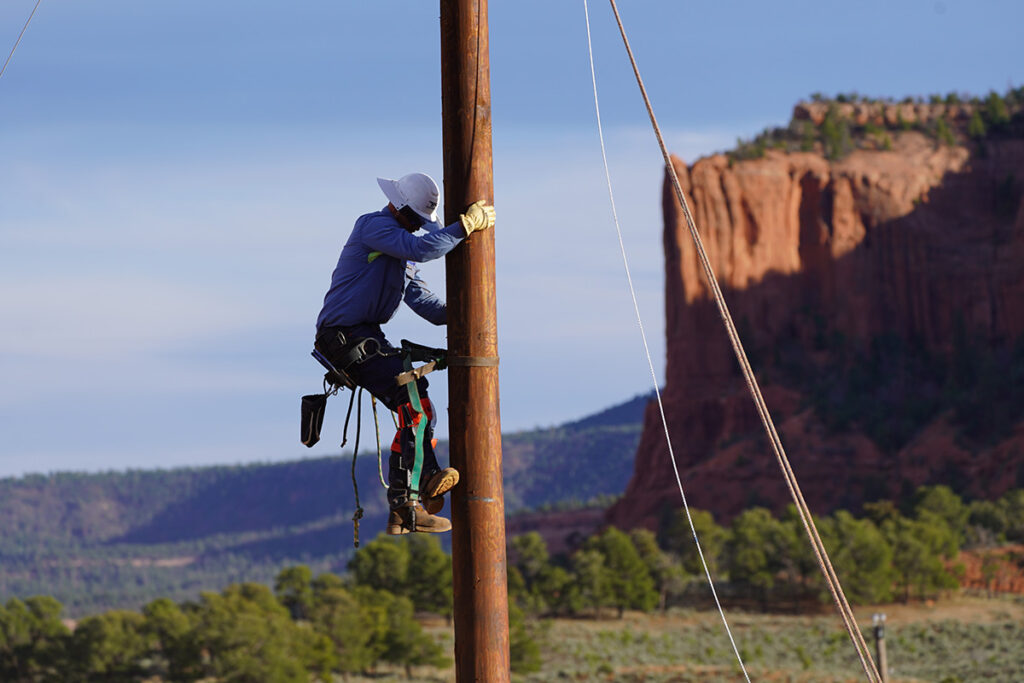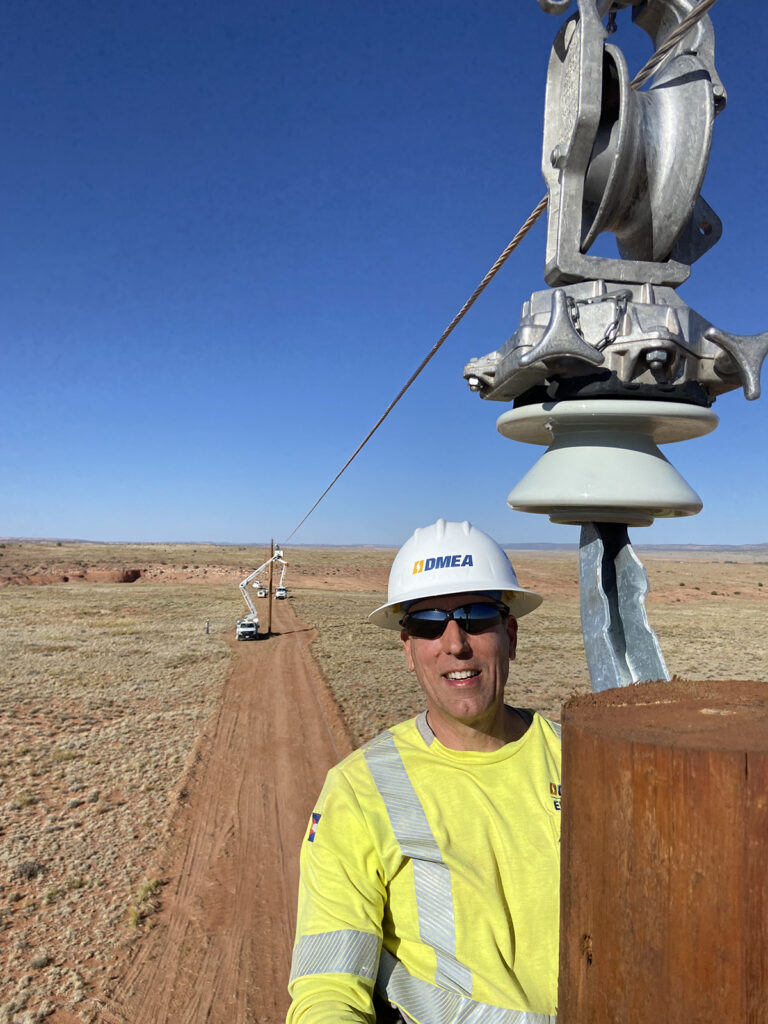
Cody Thomas, a journeyman lineworker from Withlacoochee River Electric Cooperative in Florida, thought there was no greater feeling than turning someone’s power back on after a storm.
But then he volunteered as part of a 16-member crew that traveled from the co-op’s headquarters in Dade City to the Navajo Nation in Arizona and New Mexico to bring electricity to residents who have been waiting their whole lives to turn on the lights.
“When you get to turn somebody’s power on for the first time, it hits deeper,” Thomas said. “It means a lot to me to be able to say I’ve done that.”
WREC was one of a record 17 electric cooperatives that volunteered for Light Up Navajo this year, said Deenise Becenti, government and public affairs manager for the Navajo Tribal Utility Authority.
The project—which began in 2019 as an initiative of NTUA and the American Public Power Association—has brought power to about 1,000 homes in Navajo Nation, an area the size of West Virginia where more than 10,000 of the approximately 56,000 homes do not have electricity.
The goal of this year’s effort—which lasts from May through July—is to bring electricity to at least 175 homes in remote parts of the nation.
Most of the co-op volunteers came from nearby Western states like Colorado, Arizona and Nevada. But crews also came from co-ops based much farther away, including Alabama and Wisconsin. WREC came the farthest, from about an hour north of Tampa, Florida.
“Rural electric co-ops participating in Light Up Navajo take a step back in time,” Becenti said. “They go back to when rural America was being electrified in the 1930s. That’s what I hear from co-op journeymen about stepping into the work boots of their predecessors.
“The co-op volunteers also witnessed the gratitude of relief from family members they have connected for the first time. They saw children cheering, mothers crying, fathers and elders smiling—knowing that their lives have dramatically changed.”
Tyler Strouse, a journeyman lineworker from WREC, said one of the stories that touched him most was a grandfather whose son, daughter-in-law and grandkids are moving back to Navajo Nation to be with him now that their home has electricity.
“He got his family back,” Strouse said. “That meant everything to him.”
Jack Johnston, CEO of Delta-Montrose Electric Association in Colorado, knows the emotional impact well. It’s what compelled him and his two volunteer crews to return to Navajo Nation to participate in Light Up Navajo for the third consecutive year.
“It was another fantastic year,” said Johnston, who got certified to climb power poles so he could help string lines to bring electricity to homes in the Monument Valley area.
“Obviously, what’s different is the individuals you meet along the way,” he said. “You remember and cherish every single one of them. It’s a rare opportunity to be there to experience it with them in the first minutes of that life-changing event when the lights come on. That never gets old.”

The Delta-Montrose volunteers have worked in different areas of the vast Navajo Nation each year, confronting unique challenges based on the rugged terrain.
“This year, we had to build across a canyon,” Johnston said. “But knowing what it will mean to people gives you that enthusiasm and drive to get it done.”
While DMEA crews were sweating in the intense heat down a canyon, the WREC crews were 7,500 feet up a mountain in fierce winds.
“We anticipated some wind, but not like that,” said Jamen Monbarren, a WREC district manager and the team lead on the Light Up Navajo project. “We had sustained winds of 50 mph. There were definitely times when we all wished we had a chin strap to keep our hard hats on. Sand and little pebbles hit your face. We all ended up with sand in our ears.”
The Florida lineworkers pride themselves on dealing with alligators, snakes and other fearsome critters in their home state. Still, Travis Brown, a WREC journeyman lineworker, said it made his heart skip a beat when he stepped on a 5-foot-long snake in New Mexico.
“It scared me pretty good,” he said. “I looked carefully before I took a step from then on.”
In the end, Brown and the rest of the WREC crew built 6.5 miles of power lines up the steep mountain in just eight days. The job had initially been projected to take three weeks and involve dozens of employees of the U.S. Army Corps of Engineers with specialized equipment.
“Our guys showed resiliency, compassion to others and patience,” Monbarren said. “I’m super proud of them. The people whose lives we impacted are going to live in our hearts forever. You go there to change somebody’s life, and it changes yours.”
Erin Kelly is a staff writer for NRECA.